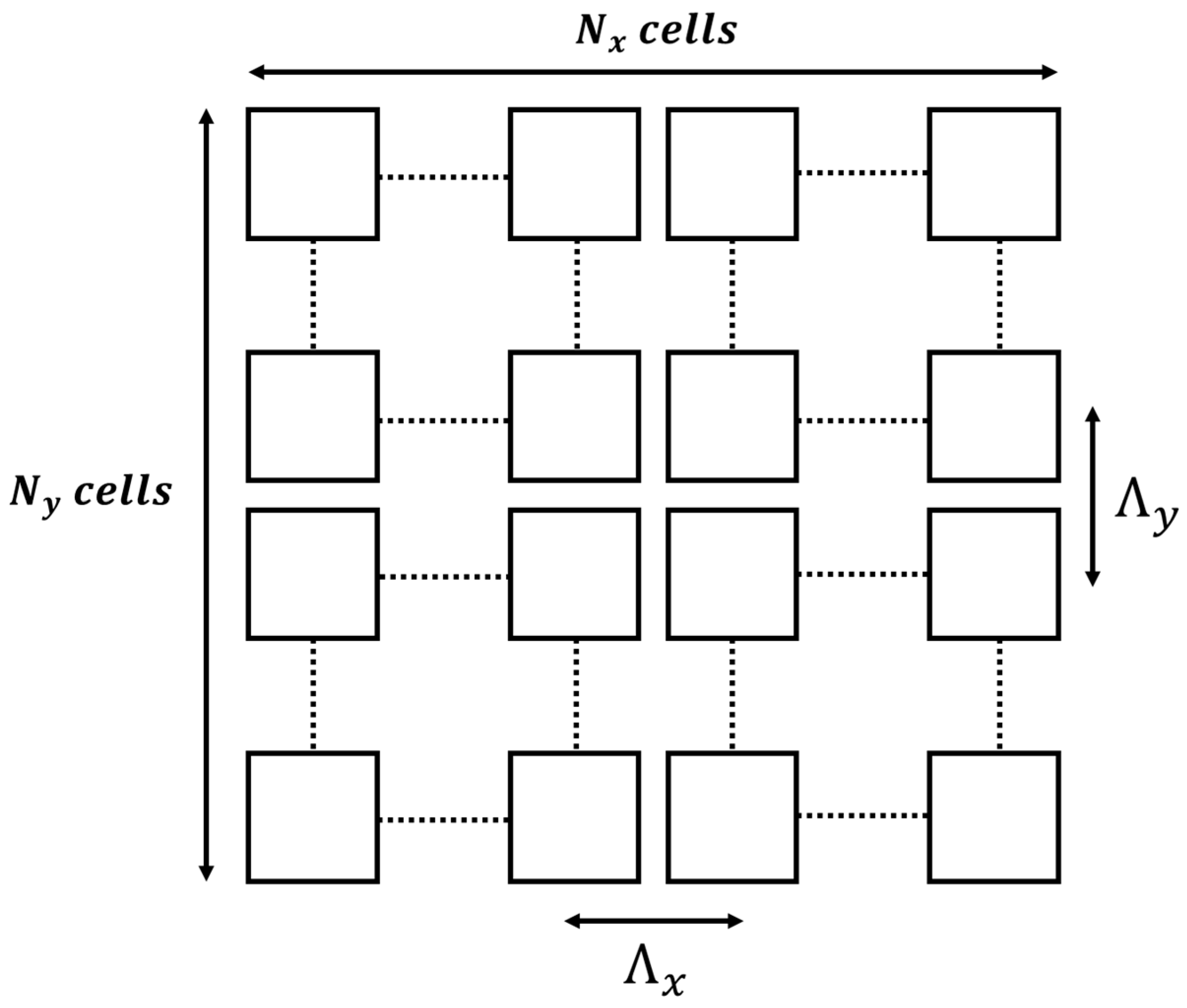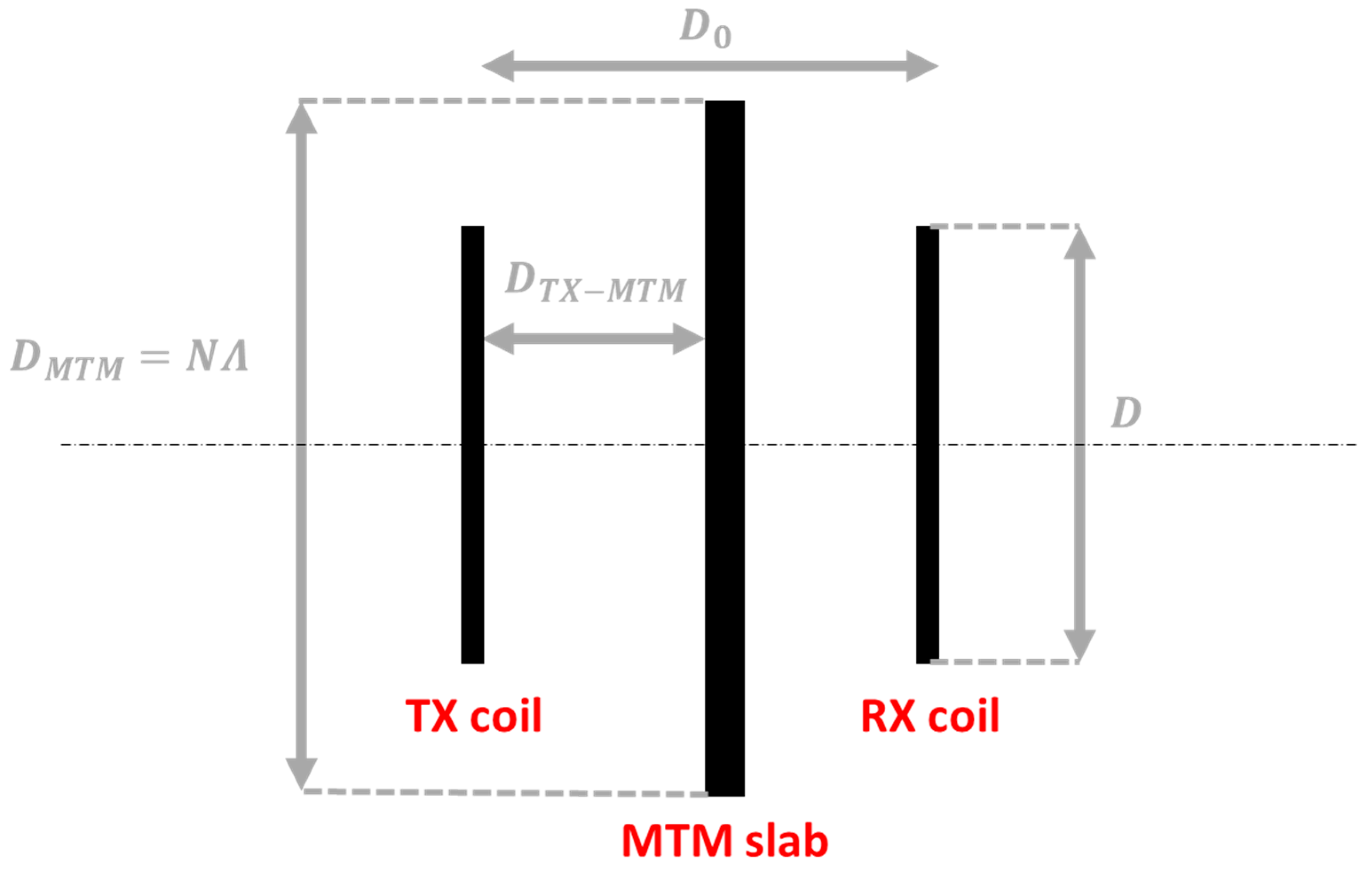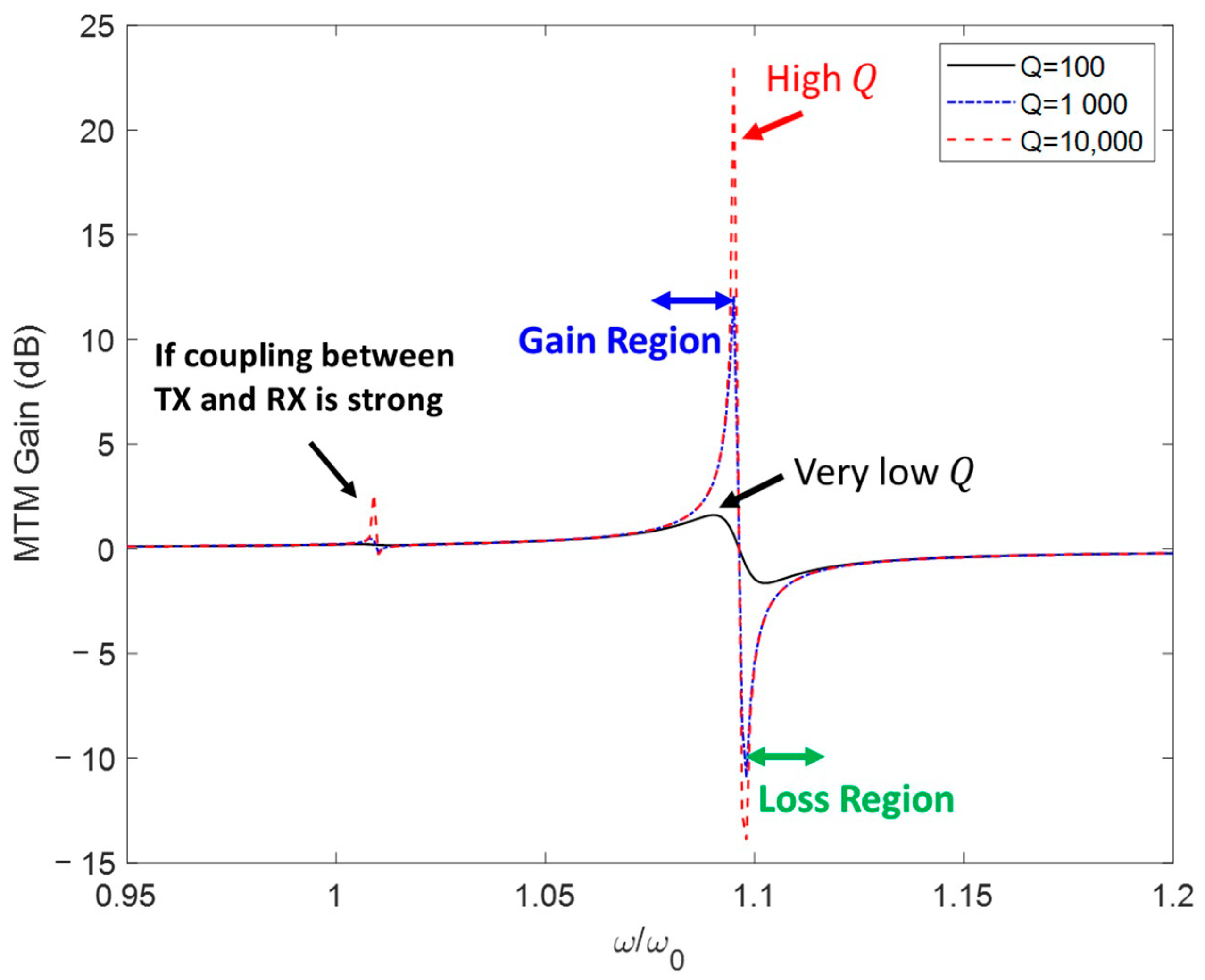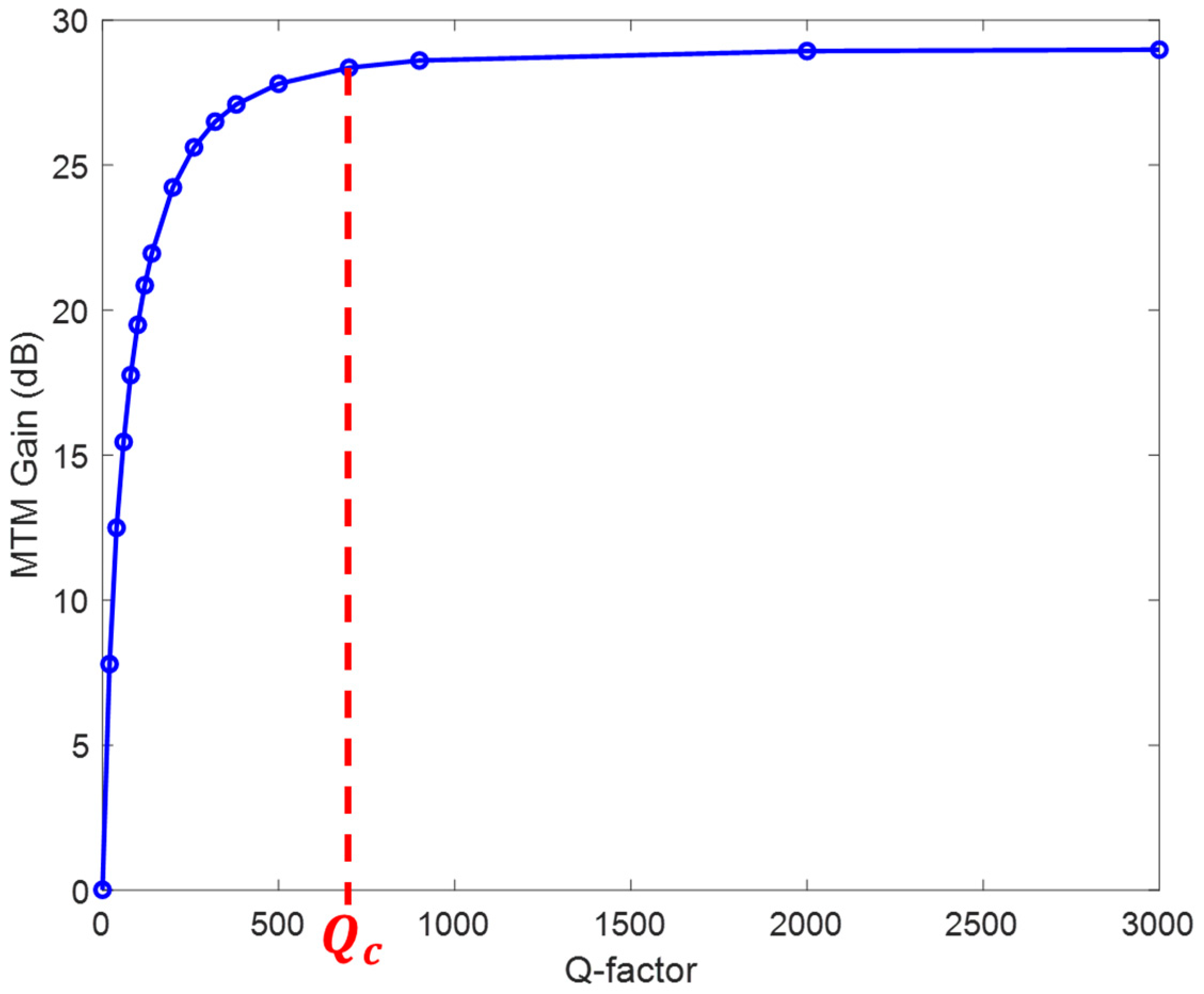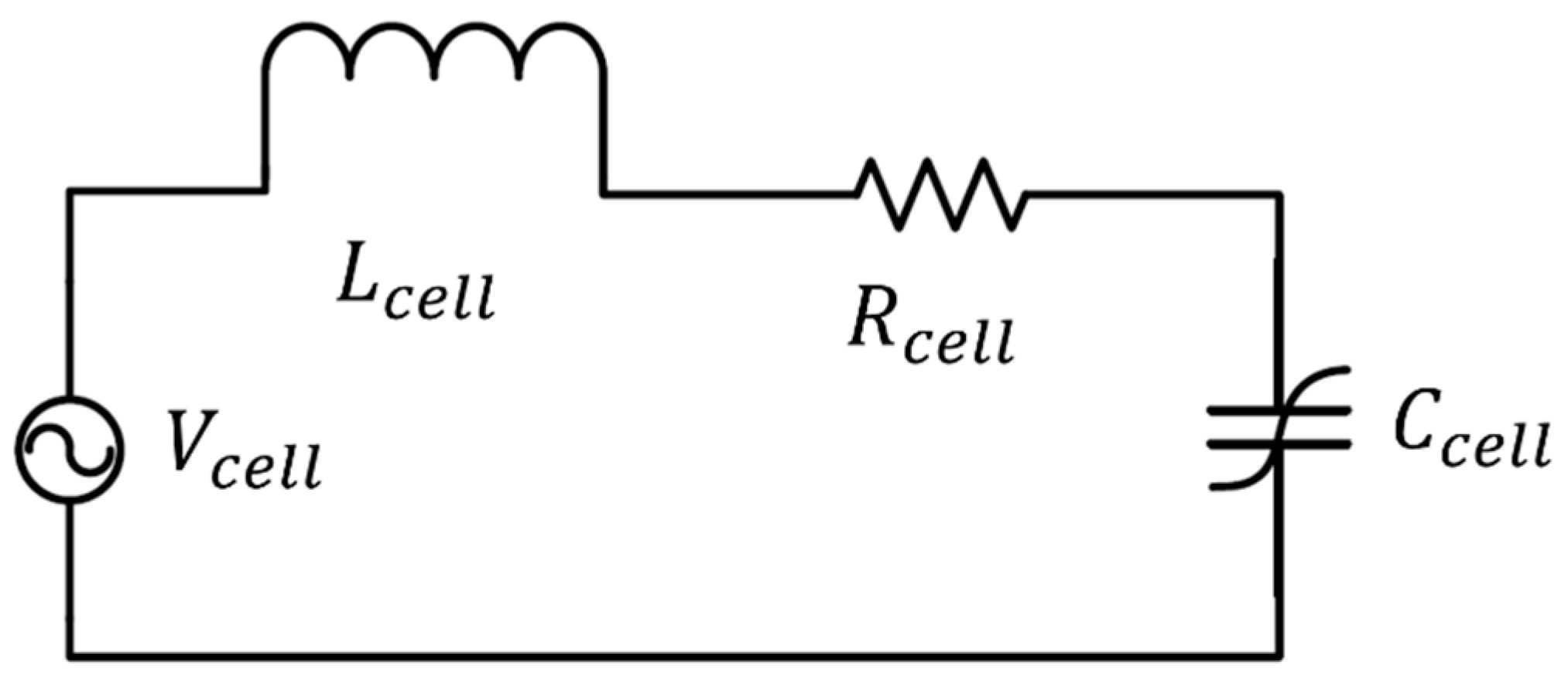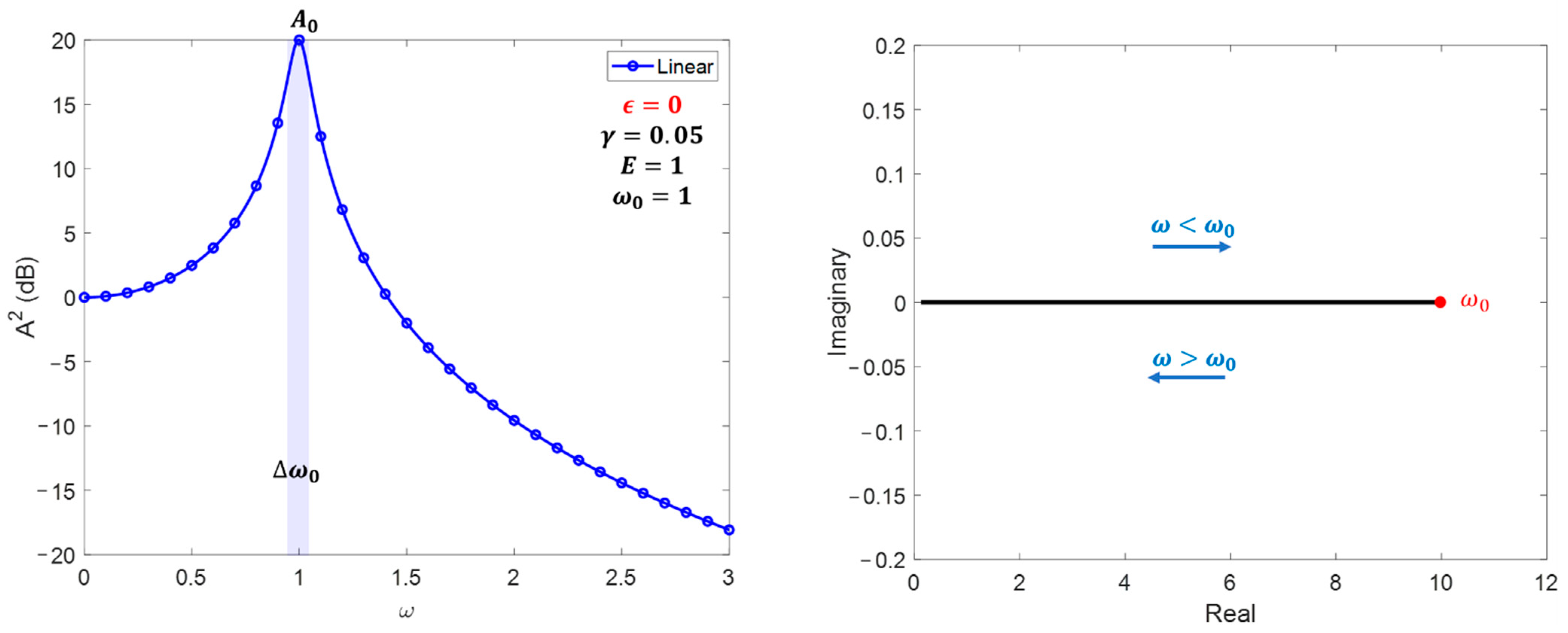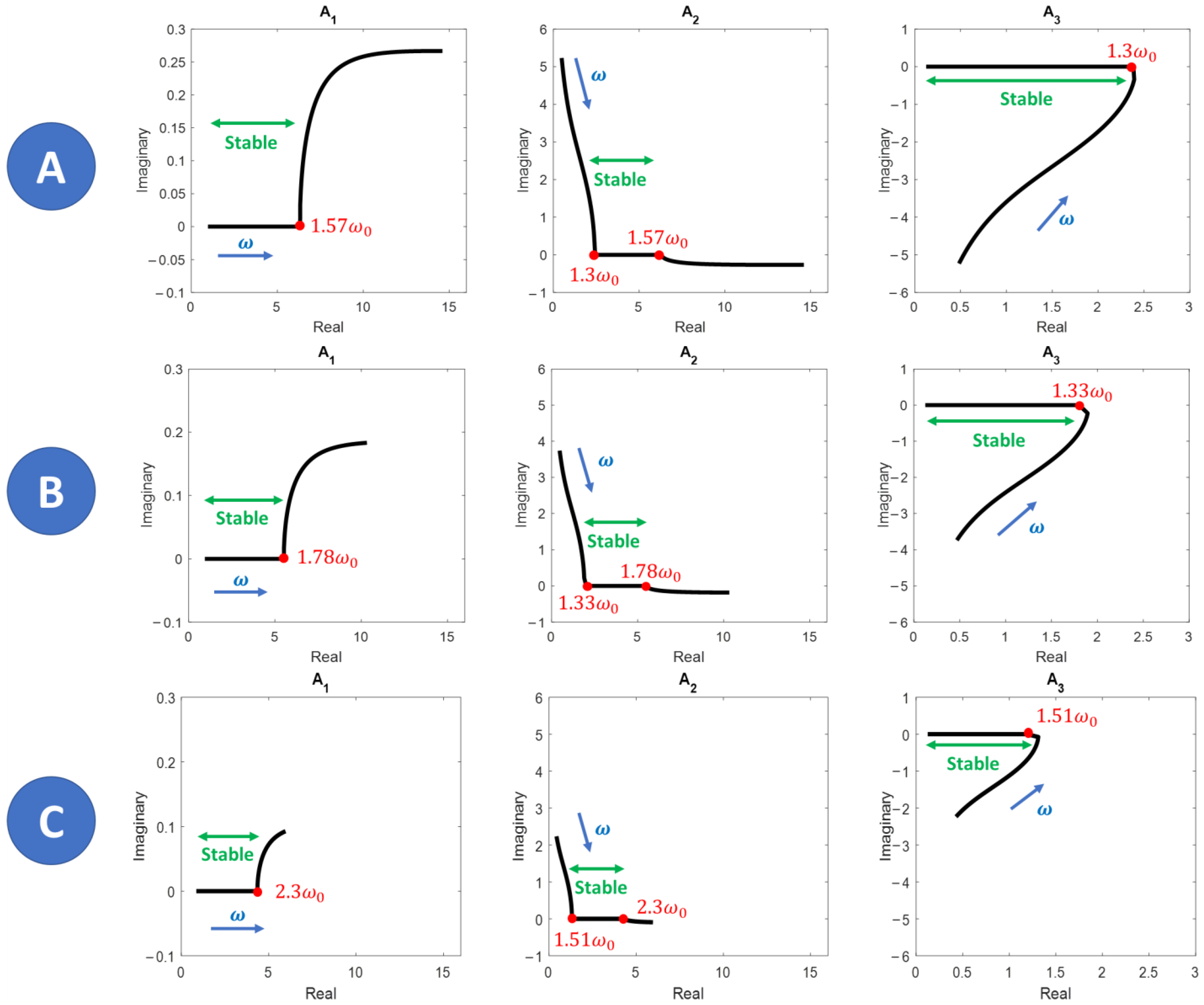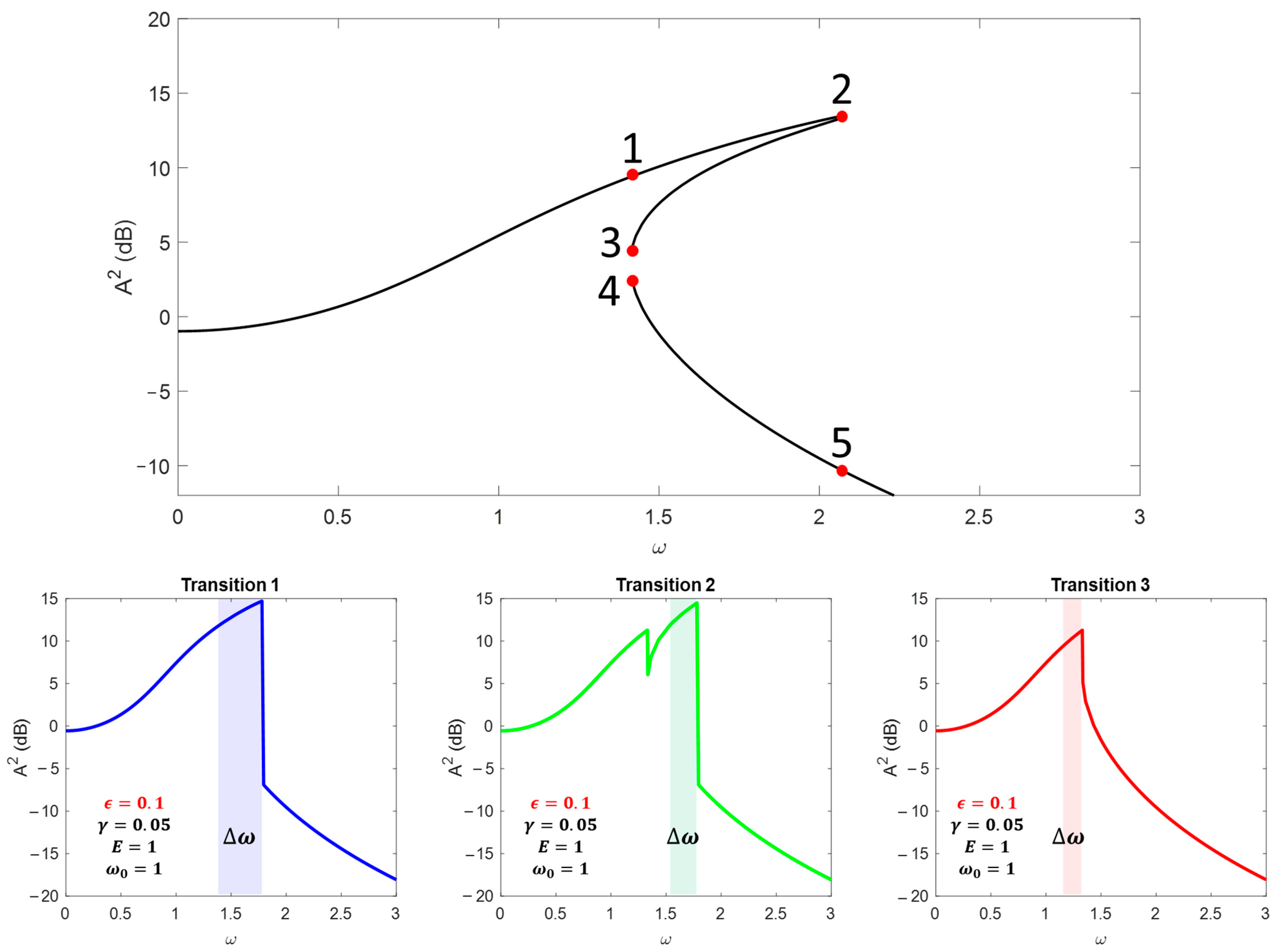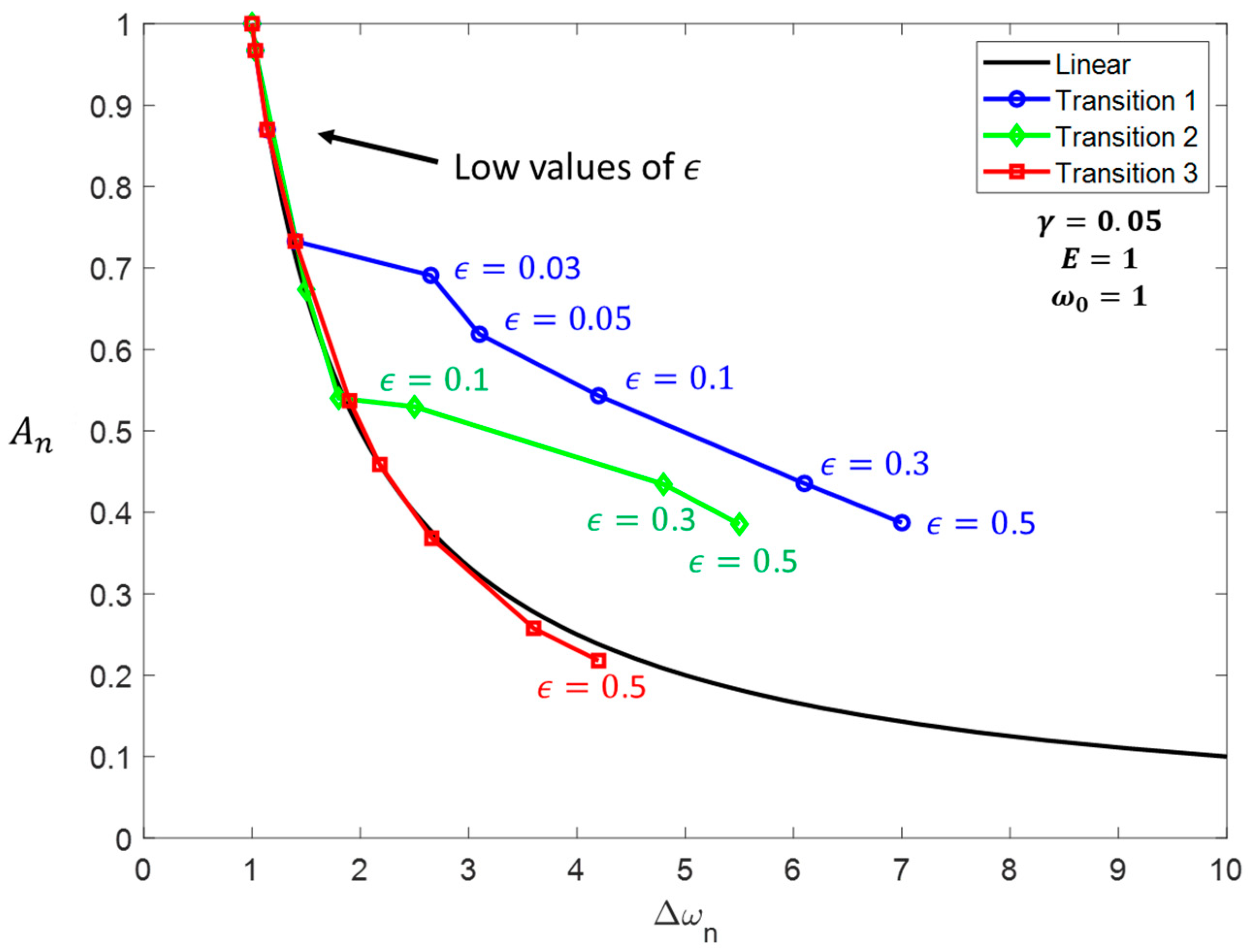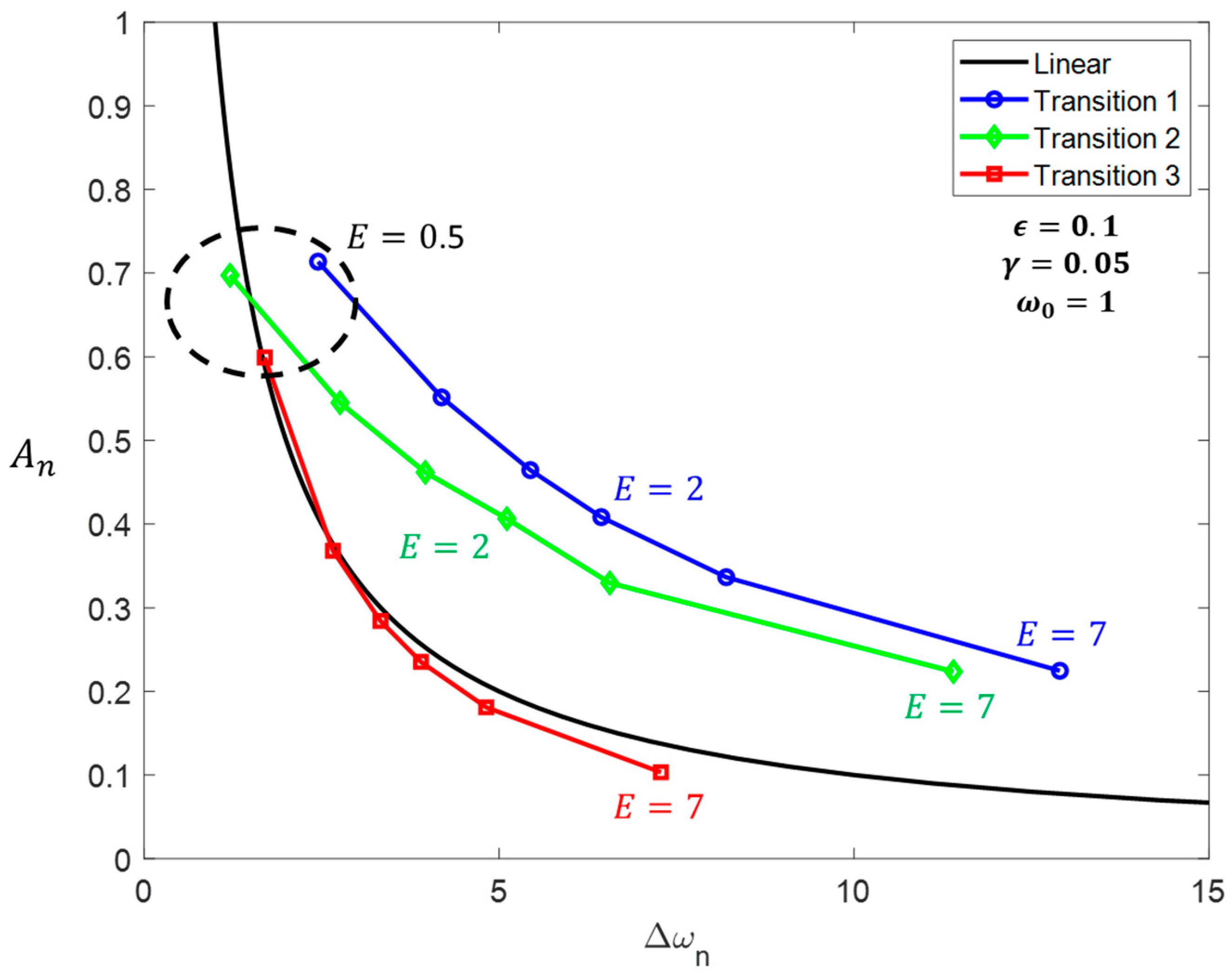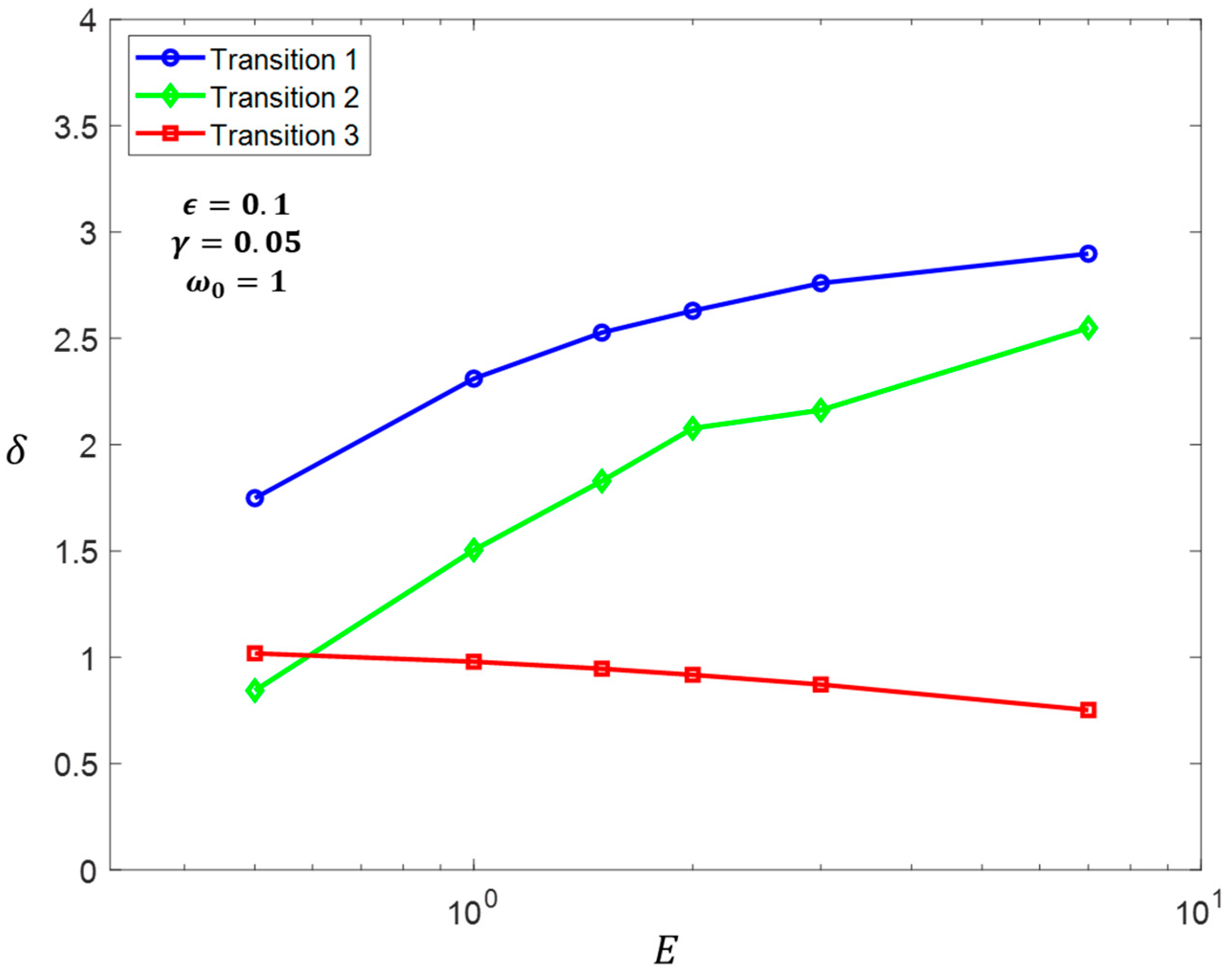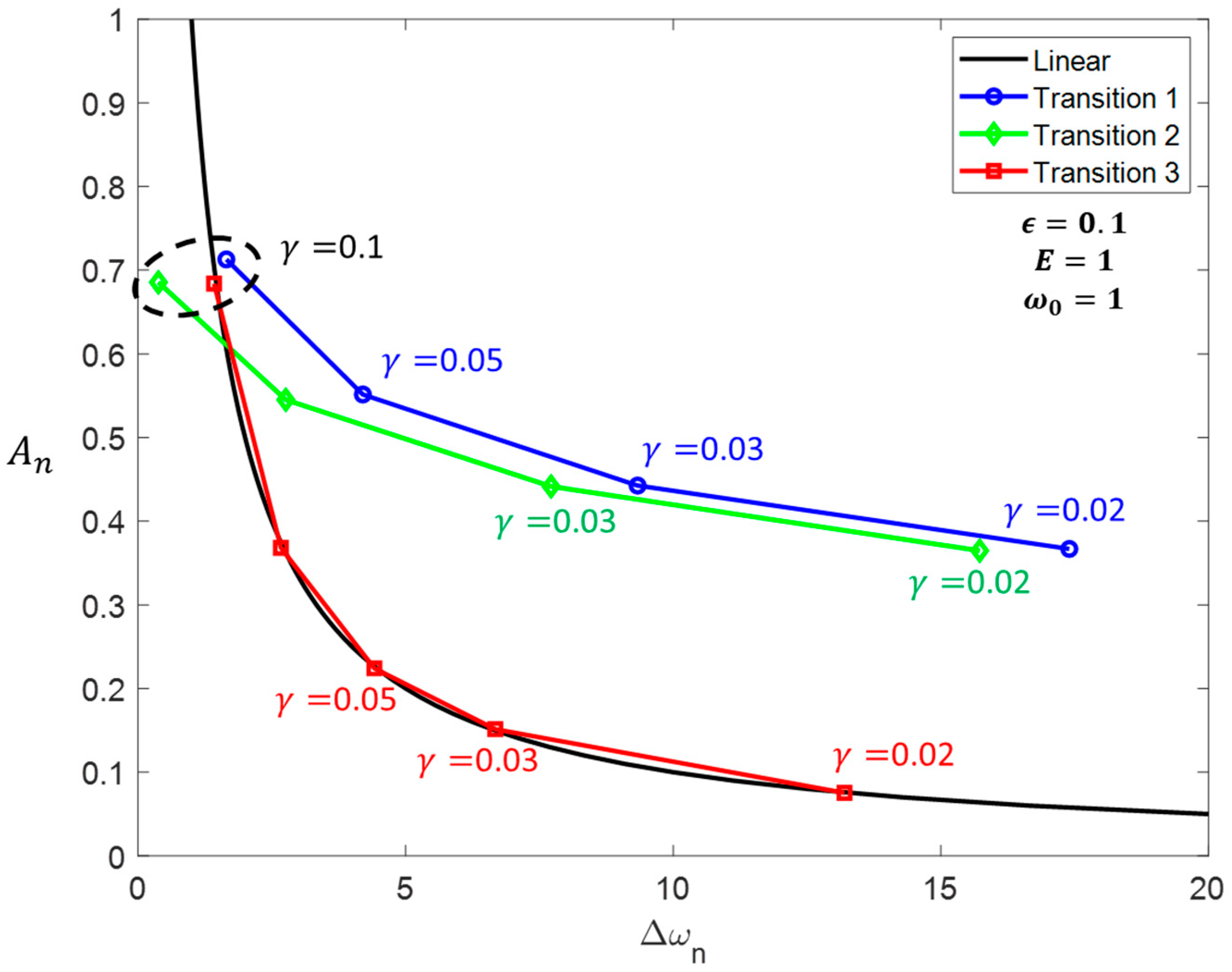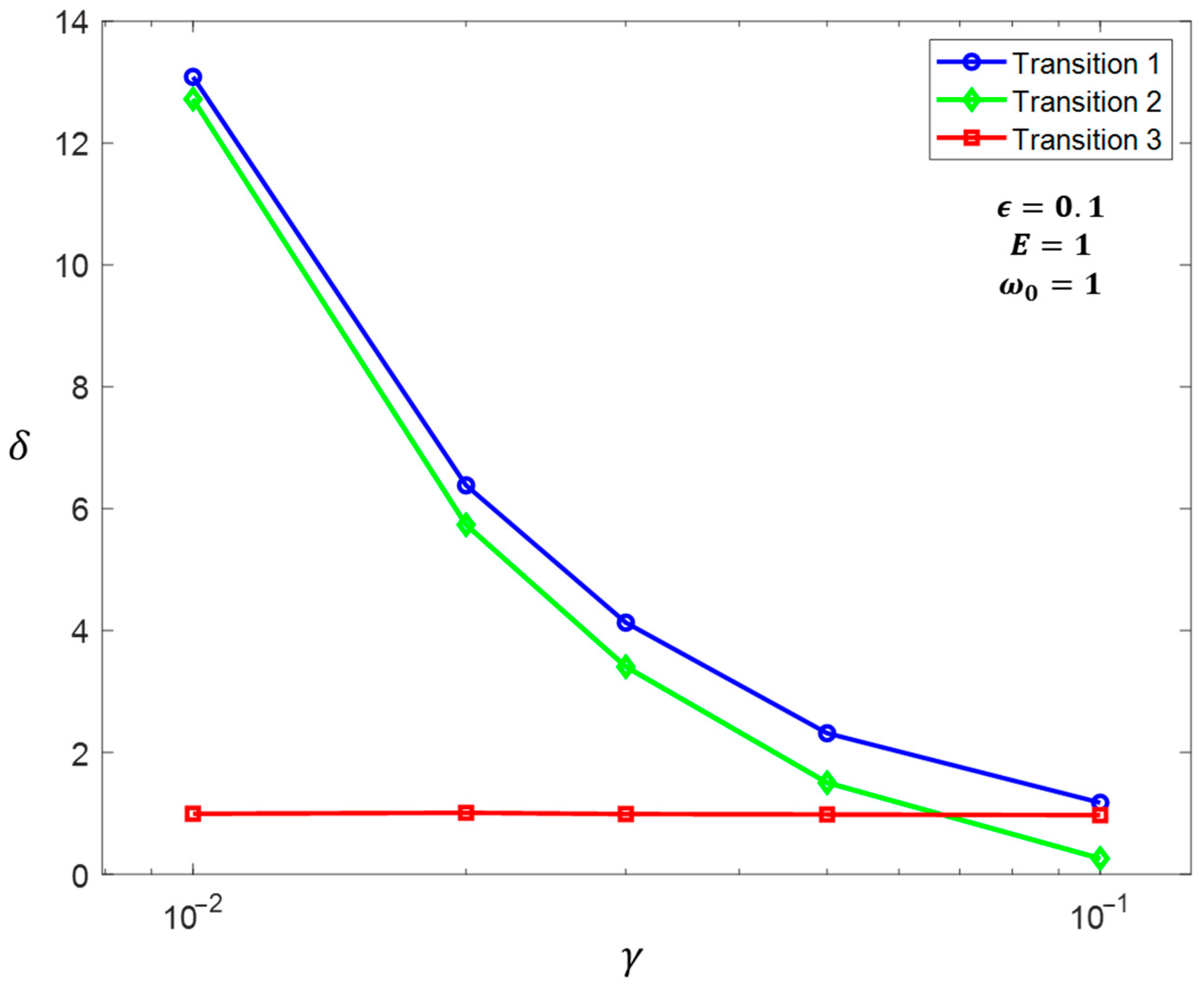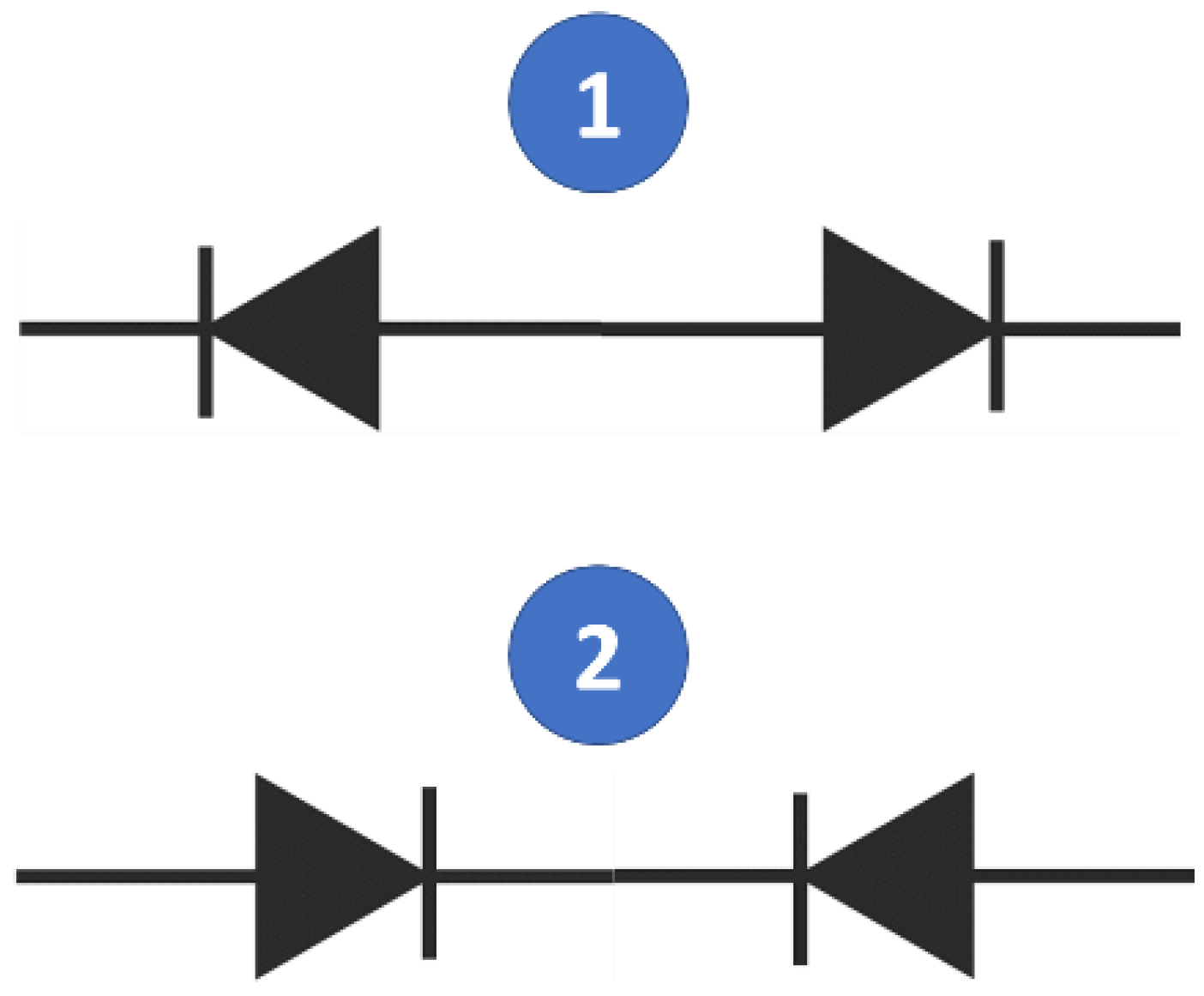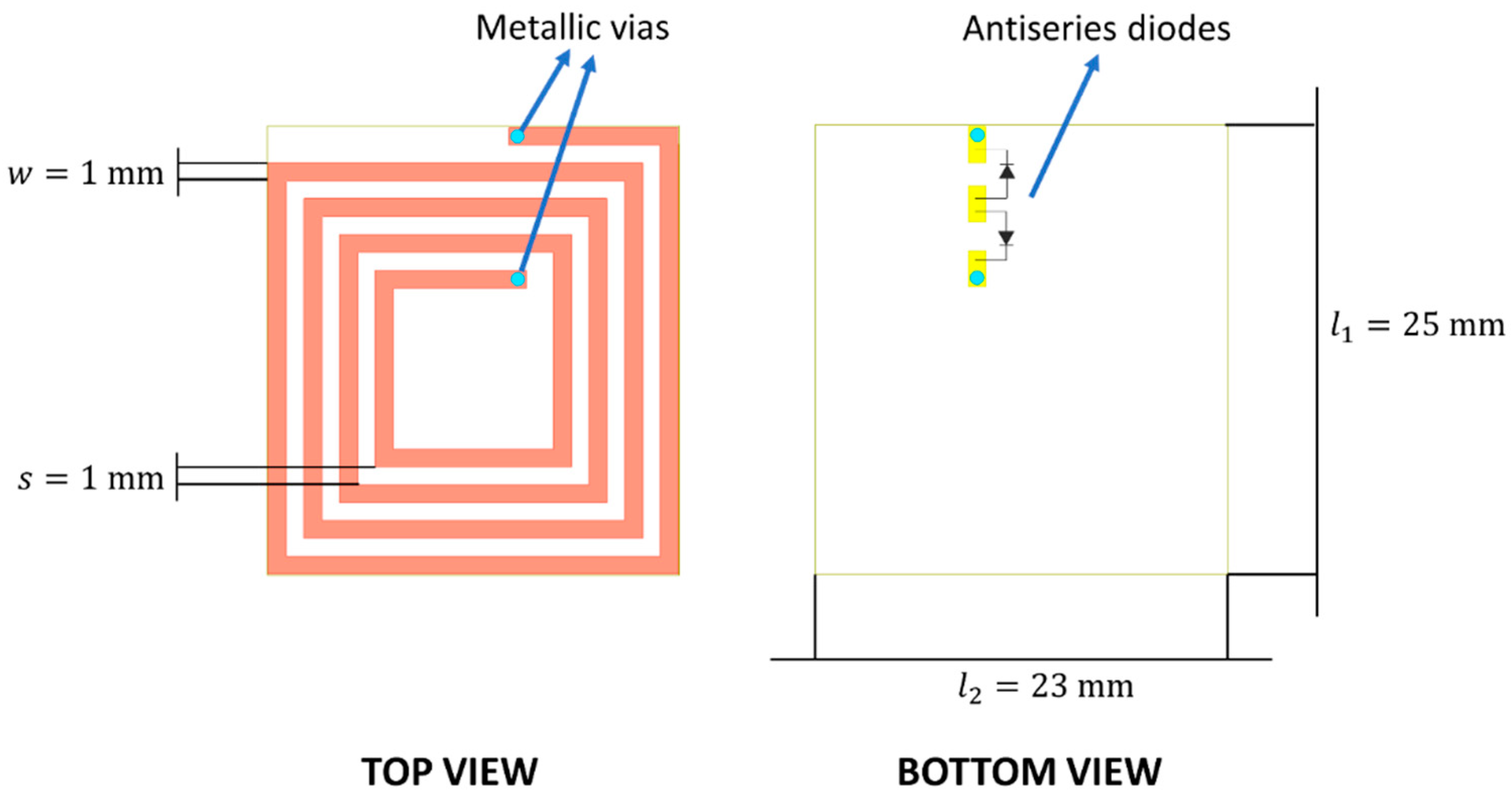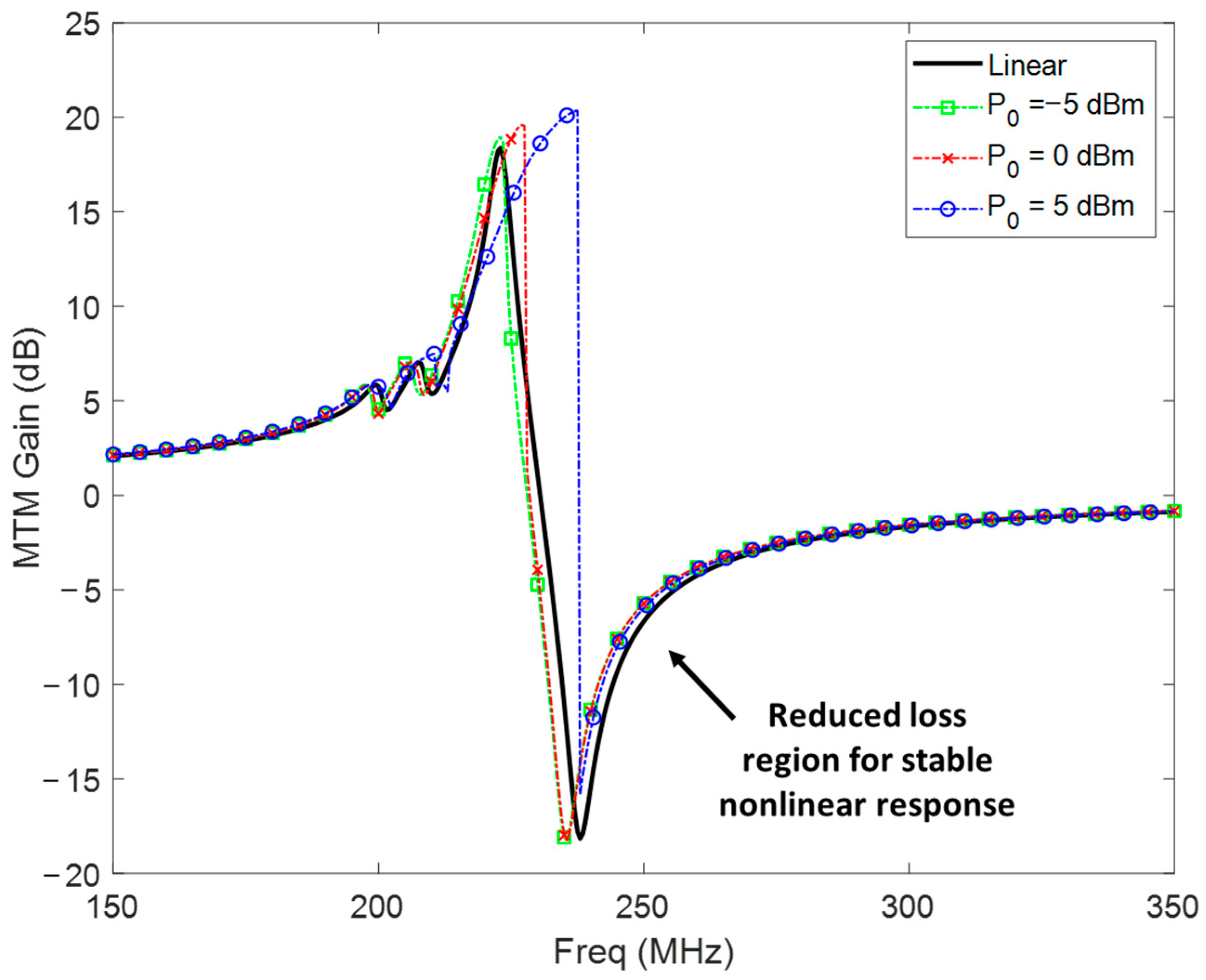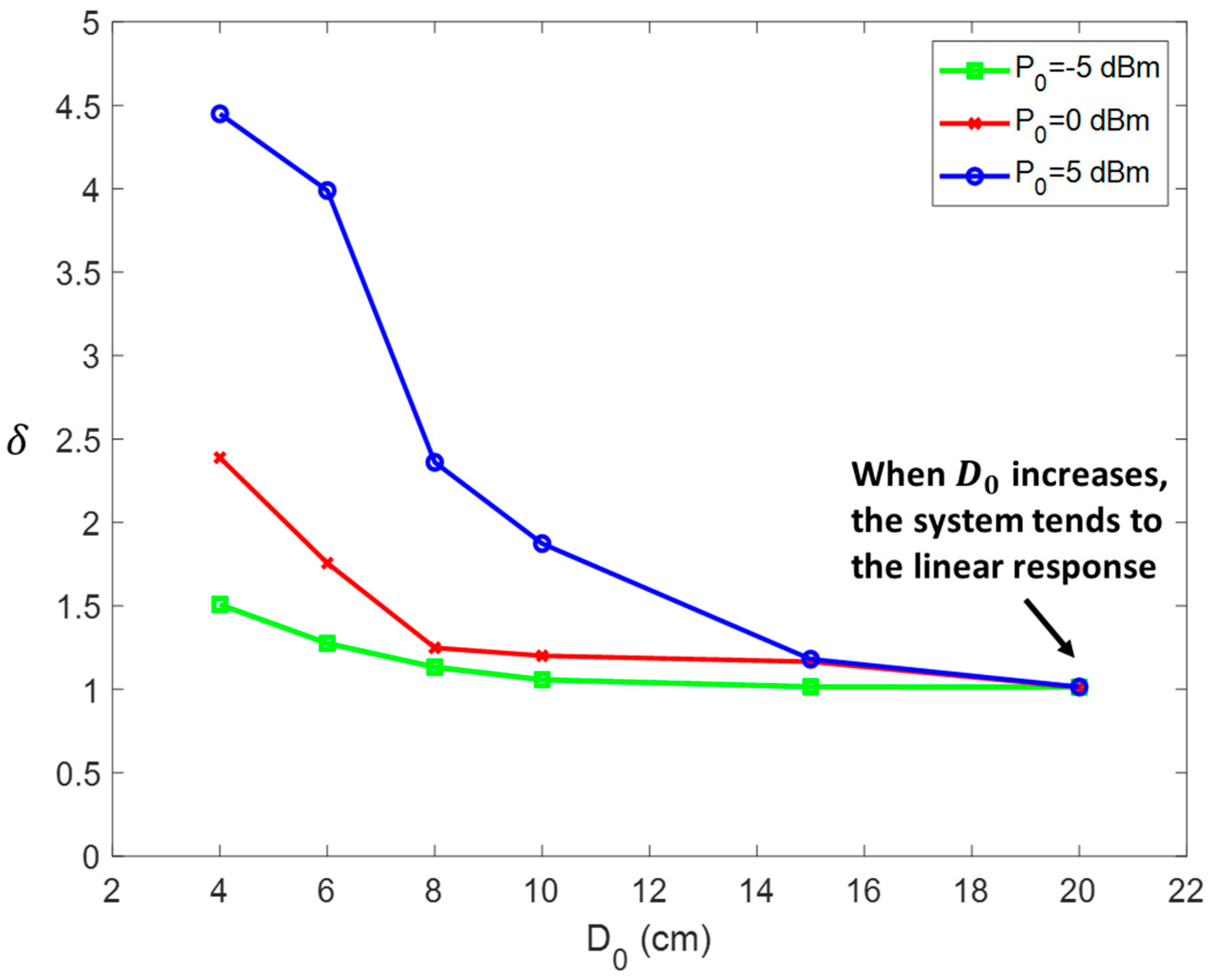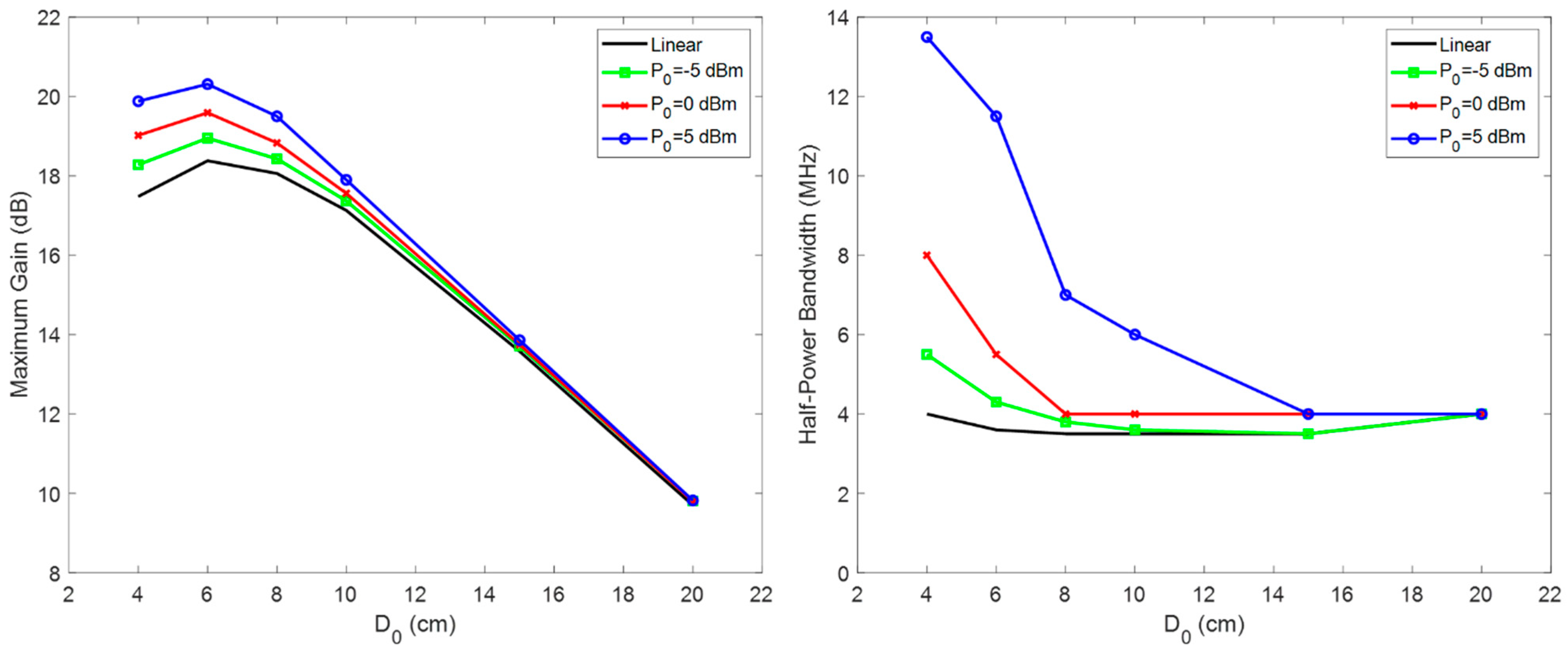2.1. General Circuit Analysis Solution of MTM-Assisted IPT Systems
Assuming that the MTM is formed by a square lattice with
with constant periodicity
(see
Figure 1), the circuit analysis of the proposed system results in a
by
problem, whose elements are given by:
where
is the equivalent impedance of the MTM unit cell,
is the mutual inductance between the cell
and
of the MTM slab,
is the mutual inductance between cell
and the TX coil,
is the mutual inductance between cell
and the RX coil,
and
are the currents in the
and
cells, respectively, and
is the angular frequency.
Making the simplifying hypothesis that the current in the RX coil is negligible in comparison to the current in the TX coil (
), the problem can be rewritten in the matrix form as follows:
If all the
and
coefficients are known by analytical or numerical computing, the solution of the system is then given by:
As expressed in (2) and (3), each individual MTM cell current
is affected not only by the TX coil excitation but also by the current in all other cells due to their mutual coupling. This effect is particularly strong and dominated by the mutual coupling between adjacent cells. Because of that, the resonance frequency
of the unit cell and the MTM operating frequency
(the maximum gain frequency) are slightly different and obey the following relationship based on the sign of the magnetic coupling
:
where
represents a coaxial and
represents a coplanar coupling among the cells. For practical reasons, the coplanar coupling between the cells is the most common scenario.
If the vector
can be obtained from (3), then MTM power gain at the receiver plane is given by:
where
and
are the system’s transmission coefficient without and with an MTM inside the inductive link, respectively, and
is the mutual inductance between the TX and the RX. Notice from (5) that
basically comes from the energy stored in the MTM cells transmitted to the RX coil by
.
Although it is not possible to solve (3) when is nonlinear, the analytical investigation of the linear case can be useful to understand the basic mechanism of the MTM near-field focalization.
For example, let us consider an IPT system consisting of two coupled coils with one MTM lens, as shown in
Figure 2. The unit cell circuit is assumed to be a planar coil connected in series with a linear capacitance. For the considered numerical example, it is assumed a square lattice with
,
,
,
,
,
,
,
, and
.
Applying the formalism described in (1)–(5), the presence of the MTM into the inductive link causes a non-negligible
to be obtained in a narrowband region close to the unit-cell resonance
, as shown in
Figure 3. As expected,
is slightly higher than
since the coupling between the MTM cells is coplanar (
). However, if TX and RX coils are in close
, a secondary, low gain region can be perceived around
due to the strong coupling between the drivers. Due to the anti-resonance phenomenon that exists between two coupled coils, the gain region induced by the MTM is immediately followed by a loss region. The existence of a loss region in linear MTM-assisted IPT systems makes them quite sensible to frequency shifts. Out of these two special regions around the resonance and anti-resonance, the MTM is completely transparent to the system (null gain). As shown in
Figure 4, MTM gain at
is basically a function of the Q-factor of the cells until this effect saturates above a critical
. Essentially,
marks the maximum magnetic energy that can be stored by the cell.
Notice that, according to (5), MTM gain is proportional to and inversely proportional to . So, despite , an attenuation of the maximum MTM gain is expected if TX and RX coils are very strongly coupled and if the coupling between the unit cells and the TX coil is too weak.
2.2. Linear Series-Connected Unit-Cell Parameters
Most MTM-based MNG lenses presented in the literature to enhance the magnetic coupling between the IPT drivers are based on linear resonators consisting of a lattice of planar coils with resonance frequency controlled by a series-connected linear lumped or distributed capacitances [
18]. In terms of equivalent impedance, these resonators can be represented as a simple series RLC circuit:
where
,
, and
are the linear resistance, inductance, and capacitance of the MTM cell circuit.
The MTM capability of enhancing the power transmission between the drivers depends on its energy storing capacity, which, by definition, can be quantified by the Q-factor of the resonator:
where
is the resonance angular frequency and
is its half-power bandwidth.
The Q-factor can also be written as the ratio of the reactive impedance
and the resistive impedance
:
Knowing that
, the definition of
for any series RLC can then be obtained as:
where
is the damping factor.
Based on (7)–(9), it can be concluded that for the linear case the amplitude-bandwidth characteristic of the system can only be improved by increasing .
2.3. Nonlinear Series-Connected Unit Cell Based on Duffing Resonator
The basic and most common DR topology is a series-connected RLC with a nonlinear capacitance, as shown in
Figure 5. As discussed in [
14], in order to obtain a stable DR response, the circuit nonlinear capacitance must be symmetrical to the voltage bias:
As discussed in [
14,
15], the DR’s behavior based on bias-symmetrical nonlinear components is dominated by its third-order nonlinear component, which results in the following differential equation:
where
is the nonlinear capacitor charge,
is the amplitude of the excitation applied to the system,
is the angular frequency of the excitation,
is the damping coefficient, and
is the nonlinear coefficient. Notice that
represents the linear case, while
represents a nonlinear softening resonance obtained with a well-shaped C–V curve and
represents a hardening resonance obtained with bell-shaped C–V curve.
Utilizing the harmonic balance method, an approximation solution for the amplitude of the steady-state response of (11) as a function of
can be found. First, the solution of
is assumed to be of the form:
where
is the frequency-dependent amplitude of
,
is the frequency-dependent phase of
, and
is the normalized time.
Then (12) is replaced in (11):
Making the simplifying hypothesis that the amplitudes of the third-harmonic components are negligible, (13) imposes that the amplitudes of the fundamental-mode components are null:
Squaring both equations in (14) and adding them, the frequency response of the charge amplitude in DRs is found to be:
Notice that for low amplitudes of
or low
, the DR becomes quasilinear (
). For that particular case and the linear one (
), a closed-form solution for
can be obtained from (15):
where the different signs of (16) represent the possible polarities of the charge. By convention,
is typically chosen to be positive although the electron has a negative charge.
Even though no closed-form solution can be obtained for the nonlinear case, (15) can still be solved for (
) by expanding it as a six-order polynomial in terms of a variable
:
where each root of (17) represents a state solution of (11). Since (17) is an even function and is symmetrical to
, there are only three independent solutions (charge states). If
,
, and
are the positive roots of (17), and
,
, and
are its negative roots, then they are related as follows:
Like in the linear case in (16), the positive and negative pairs of independent solutions of (17) reflect the choice of the charge polarity. Notice that (17) becomes (16) if . So, keeping the positive sign convention for the charge, we can ignore the negative roots.
For a given set of and , , , or represent stable states solutions of (11) if and only if they are real numbers. Since there is an odd number of roots on the positive -axis, at least one of them is a real number.
Since the only nonlinear element in the DR is its capacitance, it is reasonable to admit that
and
are given by:
where
is the DR linear inductance, and
and
are the DR linear and nonlinear capacitances.
Based on (17),
can now be rewritten as:
2.4. Criterium to Determine the Bandwidth Enhancement
Since no straight relationship between resonance amplitude and bandwidth can be derived for the DR as the one found in (7), its bandwidth enhancement capabilities must be investigated by comparing it with the linear limit.
First, a normalized amplitude-bandwidth limit for the linear case (
) must be defined. Substituting (7) and (9) into (16), the maximum achievable charge amplitude
for the linear case is obtained at
:
where
is the linear half-power bandwidth.
Based on (21), when normalized by its own
and
, for any chosen set of parameters, the linear fundamental limit becomes simply:
From (11), the response of the DR can be described as the superposition of its linear (small signal) and nonlinear (large signal) terms. If the maximum nonlinear amplitude
and maximum nonlinear half-power bandwidth
of any system described by (15) is normalized by its own linear maximum amplitude
and bandwidth
:
Then the amplitude-bandwidth limit enhancement can be defined as:
where
is the nonlinear gain. Notice that almost linear scenarios,
and
, result in
, which is precisely the curve described by (22).
2.5. Numerical Examples for the Nonlinear Case
For the numerical example, let us consider a particular system characterized by
,
, and
. As shown in
Figure 6, for
, there is only a one-state solution, and the maximum amplitude is obtained at
. However, when
, the resonance hardening tilts the resonance peak to the right and the maximum amplitude is obtained
, as stated by (20) (see
Figure 7). Due to the resonance hardening, three possible states exist for the resonator, although they are only stable in the frequency region where they are pure real numbers (see
Figure 8). Around the nonlinear resonance
, all three states become stable. Due to the multistability, the system can experience three different transitions between its stable solutions, leading to three possible amplitude-bandwidth characteristics for the system, as shown in
Figure 9. Notice that the half-power bandwidth for
is asymmetrical in relation to its maximum amplitude, so it is defined as the frequency range with
.
Using the criteria established in (21)–(24), the bandwidth enhancement capabilities for the three DR transitions can be determined by any chosen
,
, and
. As shown in
Figure 10,
Figure 11,
Figure 12,
Figure 13,
Figure 14 and
Figure 15, transitions 1 and 2 enhance the linear amplitude-bandwidth limit of the series-connected DR significantly. Nonetheless, if the system experiences transition 3 instead, the obtained amplitude-bandwidth limit is bounded by the linear case. Notice that for
, the response obtained by any considered transition behaves similarly to the linear case. Especially for low values of
and high values of
, the nonlinear response can be even worse than the linear one. Finally, for high values of
and
, transitions 1 and 2 tend to behave similarly.
2.6. Duffing Resonance Implementation with a Pair of Varactors
As discussed in [
19], a capacitor with a bell-shaped C–V curve can be implemented by a pair of varactor diodes connected in antiseries, as shown in
Figure 16.
Neglecting the package parasitic capacitances, the capacitance of each varactor as a function of the applied reversed bias voltage
is described by:
where
is the junction capacitance,
is the built-in junction voltage, and
is the grading coefficient.
Expending (25) as a Maclaurin series and ignoring the terms higher than second-order,
can be approximated as:
Knowing that
and
are the voltage applied to the diodes of the antiseries, the charge stored in each of them according to (26) is then:
Notice that there is a sign change in the second-order term of and due to the antiseries configuration, which changes the relative sign of for each diode.
Reversing (27), the expressions of
and
in terms of their charges become:
If the diodes are identical, then the total voltage
applied to the antiseries pair:
By dimensional analysis of (29), the linear and nonlinear capacitances of the DR defined in (19) are found to be:
Based on (19) and (30), the linear resonance frequency
and the nonlinear coefficient
in (11) can be written in terms of the circuit and diode parameters only:
Notice in (31) that the antiseries pair of varactors always conduct to
(hardening resonance) since
. Knowing that its dimension is volts per henry, the excitation
can also be rewritten in terms of the cell parameters as:
where
is the voltage induced to the cell by the TX coil.
Notice that since depends on both the H-field intensity and the coupling between the TX coil and the MTM cells, the response of the nonlinear MTM will vary as a function of the TX input power and the separation distance between the lens and the TX coil. However, in practical applications, the MTM is supposed to be as close as possible to the TX driver to minimize the TX profile and their relative positions do not change. Thus, coupling between these two is sufficiently high and constant when the IPT system is operating.
